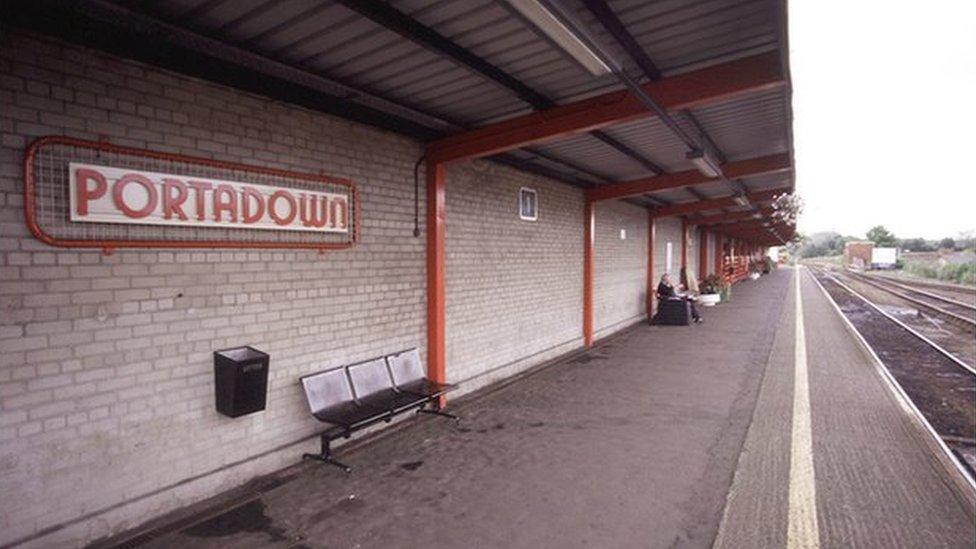All-Island Rail Review: Londonderry to Portadown line recommended
- Published
- comments
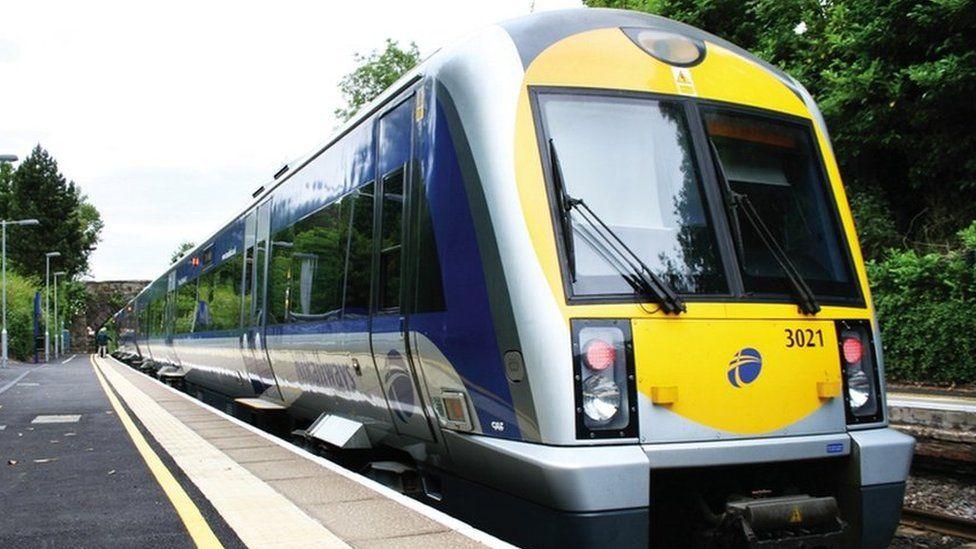
Northern Ireland's railways are mostly concentrated to the east of the River Bann
Restoration of the train line between Londonderry and Portadown is one of the main recommendations made in a new review of the railway network.
A draft report of the All-Island Strategic Rail Review was published on Tuesday.
The cost of implementing the 30 recommendations is estimated between €35bn (£29.2bn) and €36.8bn.
The list would take "the best part of 25 years" to deliver.
Costs would be split between the two jurisdictions, with Northern Ireland taking a 25% share.
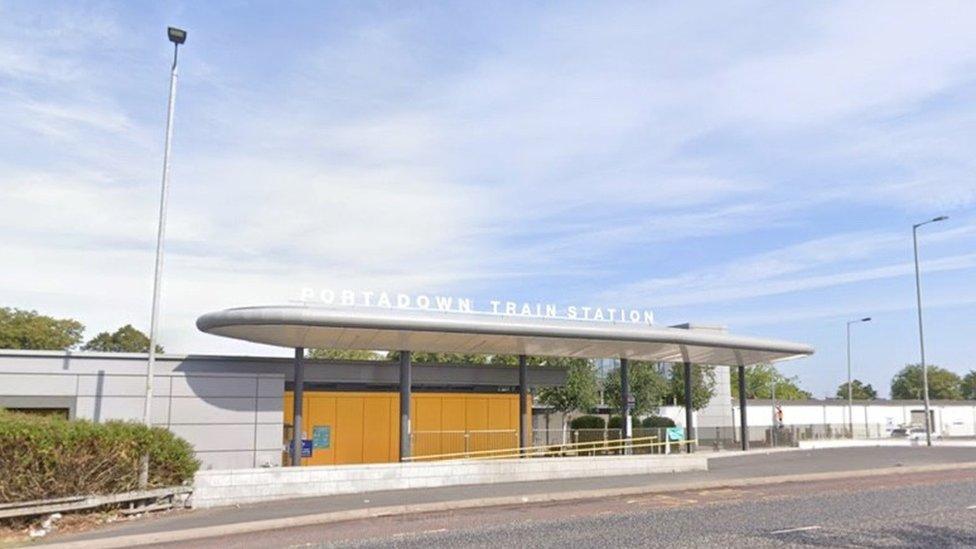
Portadown currently offers servies to Dublin and Belfast
The review cannot be formally published until a Stormont minister is in place to sign it off.
The restoration of a line from Derry to Portadown and on to Letterkenny in County Donegal would "link the large towns of Strabane, Omagh and Dungannon to the rail network" and "greatly improve intercity connectivity" from the north-west to Belfast and Dublin, the report found.
There are also recommendations about reinstating the line from Portadown to Armagh, Cavan and Mullingar, building a new direct line between Lisburn and Newry, electrifying "much of" the network and integrating bus and rail ticketing and timetabling to improve access.
Increased electrification of the network would both reduce emissions and improve journey times.

'Like it to go a little bit further'
Under the review's proposals, much of Ulster could experience rail connectivity, albeit with one exception, County Fermanagh.
Enniskillen once boasted direct routes to Derry, Dundalk and Sligo, but the review recommended that "anticipated travel demand is unlikely to justify the cost of delivering rail services at this time".
Selwyn Johnston, from Headhunters Railway Museum, said rail services in Fermanagh "should never have closed in 1957", adding future generations deserve railway connectivity.
"The conversation has started regarding environmentally friendly travel, climate change and a realisation that we should be aspiring to reinstate rail services to the west for future generation," he said.

An artist's impression of how Enniskillen train station could look if rebuilt on its former site
"Realistically the return of railways to Fermanagh will be undertaken in phases, with the first being Omagh and we are looking at the implementation of a plan over several decades to reinstate railway connectivity, which will be enjoyed by generations to come," he said.
Mr Johnston said the proposed plan to connect Omagh is "a major step forward" but he would also "like it to go a little bit further".
"This announcement will provide great encouragement to all those who have campaigned tirelessly over many years for rail services to the west," he added.
"It is up to our locally elected politicians to now give it serious consideration for the future, not to be discouraged by central government and ensure the next phase is connecting Omagh to Enniskillen."

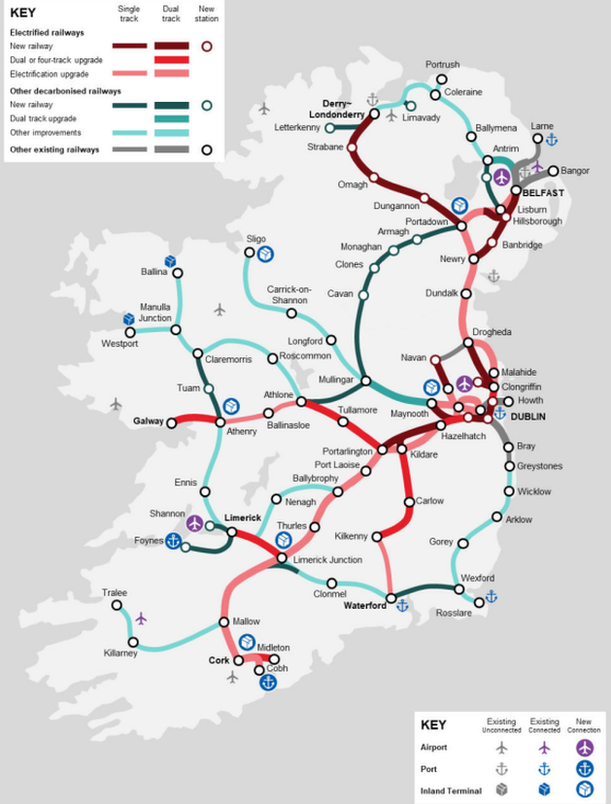
Map showing how a potential railway could look in 2050 if the review's recommendations were delivered
Airport connection
Connecting three of the island's main airports - Dublin, Belfast International and Shannon - to the rail network would give 90% of commercial aviation passengers access by train.
Six main goals have been established - Decarbonisation, Intercity, Regional & Rural, Sustainable Cities, Freight & Economy, and Economic Feasibility.
If all of its recommendations were delivered, the review authors suggest 700,000 more people across the island of Ireland would live within 5km (3.1 miles) of a train station, boosting rail catchment by 25% on today's totals.

Analysis: Clock ticking on climate change targets
Campaigners have long called for the restoration of the rail network, particularly to the large blank space that is the north-west on every train route map.
With environmental pressures to get more people using public transport, and businesses increasingly clamouring for low-carbon freight options, investing in rail should make sense.
The review acknowledges there are challenges. Some proposals, like a stop in Cookstown or a line to Enniskillen, have been ruled out because of physical or demand constraints.
But with the clock ticking on Northern Ireland meeting its legally binding climate change targets, the biggest challenge is arguably the lack of an executive at Stormont.

Connecting larger towns and cities would enable the whole island to double passenger rail market share and boost the all-island economy by €20bn, based on 2011 prices.
And two-thirds of the island's freight tonnage would pass through ports served by the railway network.
Both jurisdictions have a target of reaching net zero by 2050, with decarbonising transport set to play a large part in meeting that ambition.

Into The West rail lobby campaigner Steven Bradley says the island of Ireland needs to look providing mass transport alternatives to the car
The Into The West rail lobby group has welcomed the review's recommendation, but said how realistic implementing such changes remains to be seen.
"We have to do this stuff," campaigner Steve Bradley told the BBC's The North West Today programme.
"It is unacceptable that in 2023 there is such a large gap on the island's rail network, especially involving such a significant regional city like Derry.
"If we are serious about the climate crisis, regional development and social justice - both north and south - then we really need to look at providing mass transport alternatives to the car.
"It will all come down to whether our elected politicians and the civil servants in Stormont feel strongly enough about rail - and that's where we would have concerns."
- Published11 June 2023
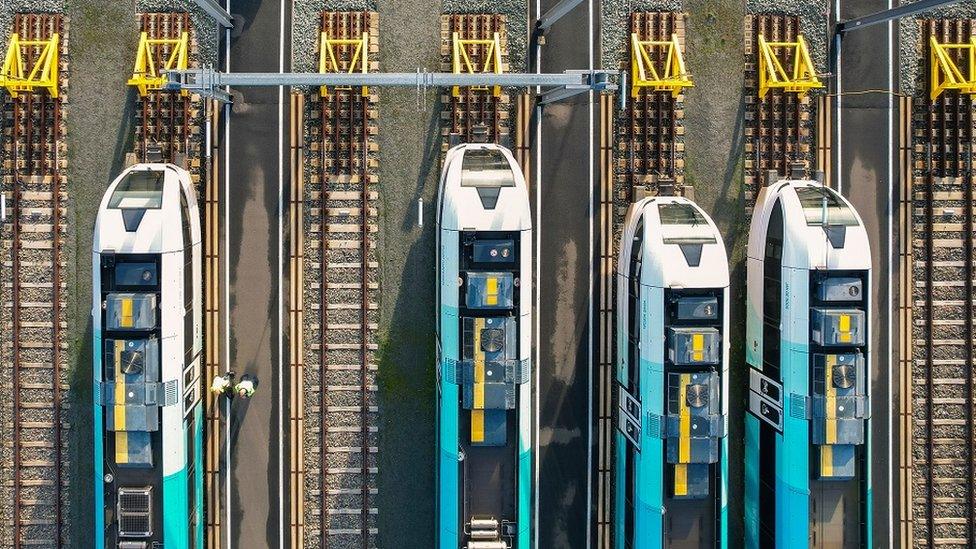
- Published3 March 2023
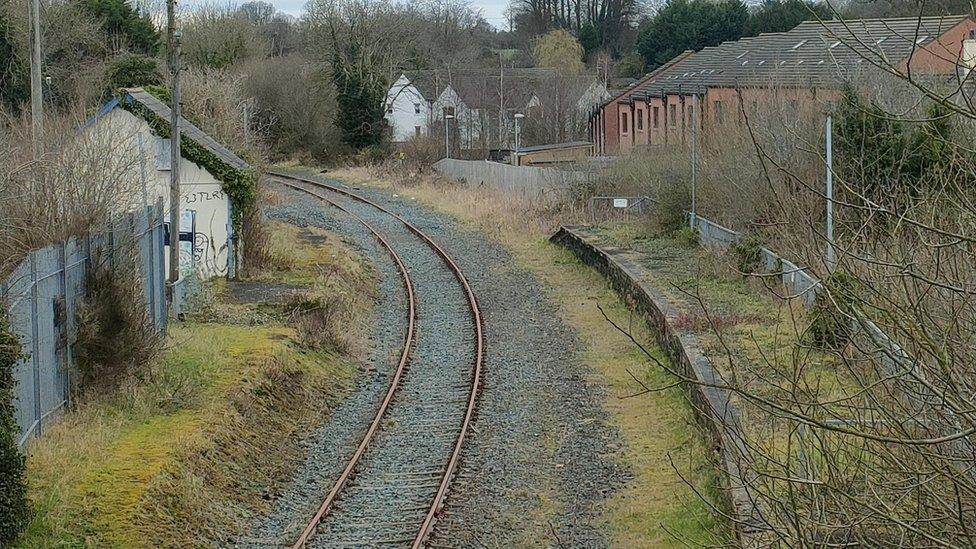
- Published19 September 2021
